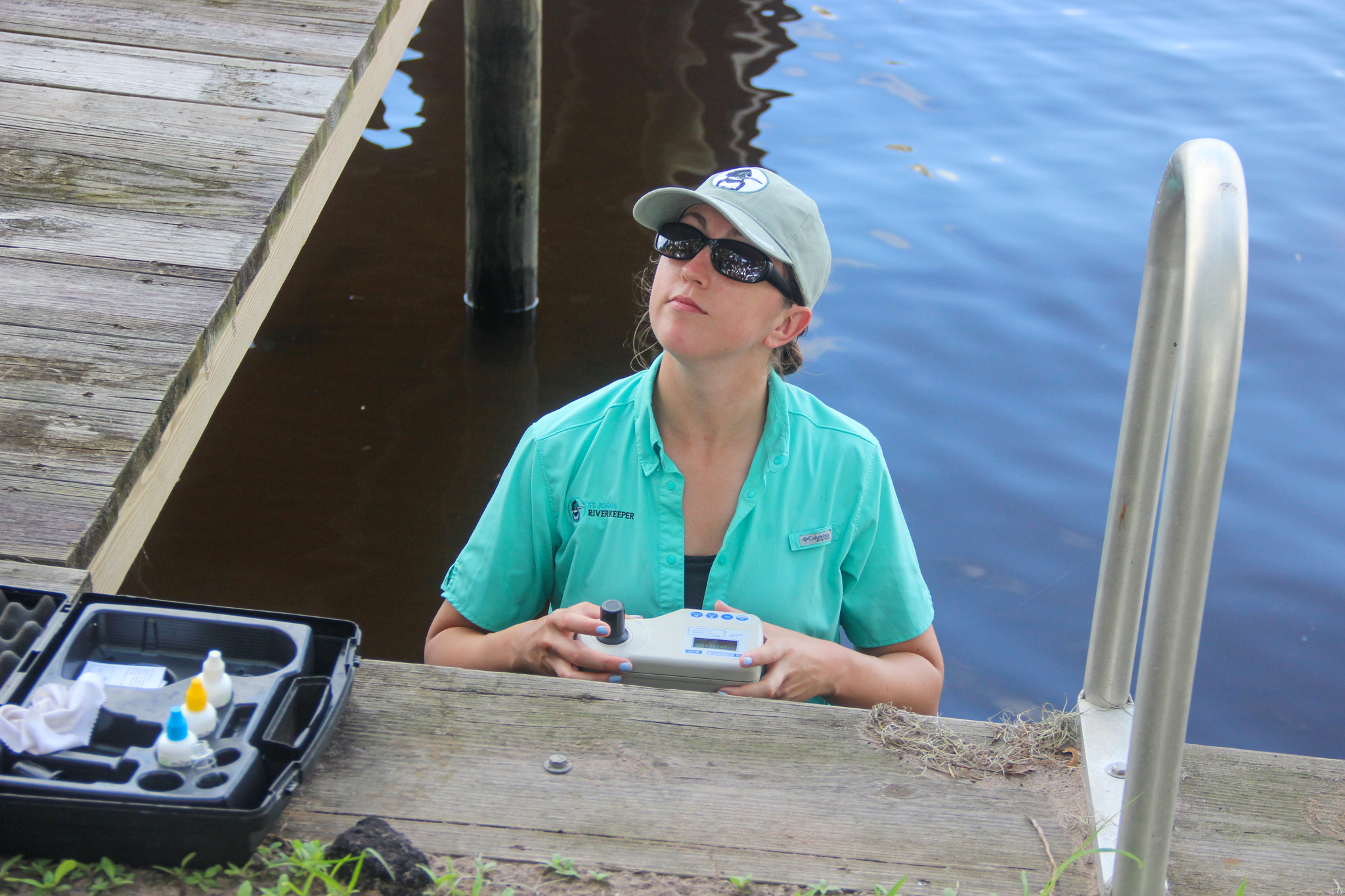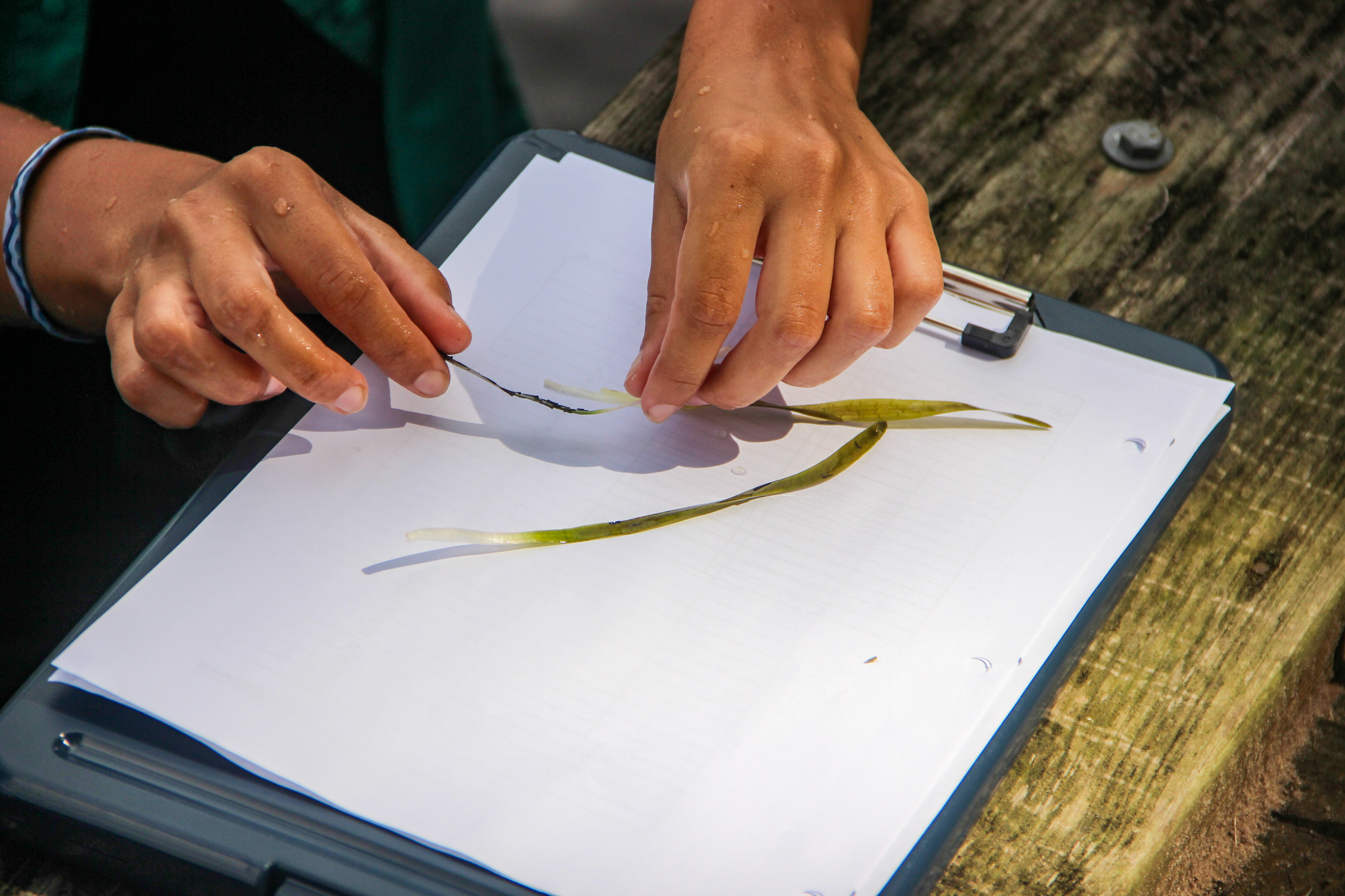A five-year program to examine submerged aquatic vegetation is already seeing some progress more than two months into the study. The St. Johns Riverkeeper started examining numerous sites along the St. Johns River this week for eelgrass growth. Putnam County was Riverkeeper Lisa Rinaman’s second stop Wednesday, and she continued her studies Thursday and Friday. “The ultimate standard is to get the grasses back where they’re healthy along the banks of the river,” Rinaman said. Eelgrass, a green, slimy grass that grows at the bottom of the river, filters out pollution and is an “important” habitat for fish, the riverkeeper added. The aquatic plant also helps prevent erosion. “They truly are the kidneys of the river,” Rinaman said. “Just like we cannot function without our kidneys, neither can the St. Johns River.” The riverkeeper and her team started studying submerged aquatic vegetation in Clay County Tuesday. They monitored the growth of eelgrass, a form of submerged aquatic vegetation also known as Vallisneria, in Satsuma Spring, Welaka, Beecher Point, Drayton Island and Lake George this week. Their first stop Wednesday was Ray and Lana Bunton’s home at Dancy Point. Ray Bunton, David Girardin and members of the Florida Fish and Wildlife Conservation Commission fenced in nearly 3 acres in the back of the Bunton property to monitor eelgrass growth, according to the riverkeeper. For two hours, Rinaman, St. Johns Riverkeeper Advocacy Specialist Soraya Aidnejad, Riverkeeper intern Zoë Tressel and retired St. Johns River Water Management District scientist Robert Virnstein traversed the Darcy Point spot looking for and recording the presence of eelgrass.

The longest specimen found within the enclosed fence reached 25 centimeters, according to Rinaman’s notes, but the tallest outside the fence reached only 3 centimeters. The riverkeeper said something has definitely been “munching on” the grasses outside the fence. “If the grasses are struggling, the river is struggling,” Rinaman said.
What’s happening to the eelgrass? While there are other forms of submerged aquatic vegetation, Rinaman said eelgrass is the dominant type of submerged vegetation in the St. Johns River. “These grasses are critical to the river’s health,” she said Wednesday. In 2017, Hurricane Irma caused roughly 90% of the river’s eelgrass to disappear, according to Rinaman. Everyone studying eelgrass thought the plant would make a comeback sooner, Rinaman said, but the grasses are not returning. Casey Fitzgerald, who retired from St. Johns River Water Management District as a senior manager, spoke at an event Wednesday evening at Azalea City Brewing Co. in Palatka. He addressed the stressors that prevent eelgrass growth. Fitzgerald said Hurricane Ian in 2022 also affected submerged aquatic vegetation, saying hurricanes brought in additional water that prevented sunlight from reaching the vegetation, which, as a result, saw significant losses. “Just like a lawn, if you don’t have any sunlight, it’s not going to grow well,” he said.

Harmful algal blooms also prevent the eelgrass from growing again, Fitzgerald said. When the riverkeeper’s team searched the river on Wednesday, they found evidence of toxic blue-green algae in Darcy Point. They even saw more of it Thursday, Rinaman said in an email. “All of the sites south of Dunns Creek had active harmful algae bloom presence,” she emailed Friday. “We are taking those samples to the lab this morning.” Wastewater discharge, higher water temperatures and exotic fish disrupting the grass beds also cause eelgrass growth to decrease, Wagner said. On Wednesday, the riverkeeper called for the removal of the Rodman Dam, which blocks the Ocklawaha River. Fitzgerald said he’s been working since 1975 to restore the river. “I’m obviously quite a failure,” he said, laughing. The Cross Florida Barge Canal project, for which Rodman Dam was created, broke ground in 1964, according to Palatka Daily News archives. The project was halted in 1971, according to freetheocklawaha.com. “That dam creates a reservoir behind it, which really isn’t a reservoir because it’s not being stored for a particular purpose other than bass fishing,” Fitzgerald said. “It’s not a water supply. It actually creates a lot of negative impacts.” He said the reservoir’s water is hotter than it would be without the dam and there is an extra 15 feet of water on top of 20 springs along the Ocklawaha River. The dam disrupts “key micronutrients” and negative algal blooms, Fitzgerald told the crowd at the brewery. “Not only would it benefit the lower St. Johns (River) tremendously from a water quality perspective … but … all the fish that used to go upstream even to reproduce, like sturgeon and American Shad, they no longer can do that,” Fitzgerald said. People who want to learn more about eelgrass can visit stjohnsriverkeeper.org. Rinaman is encouraging people living on the St. Johns River in Putnam County to monitor eelgrass growth behind their homes and email her the data. Rinaman can be reached at lisa@stjohnsriverkeeper.org.











































